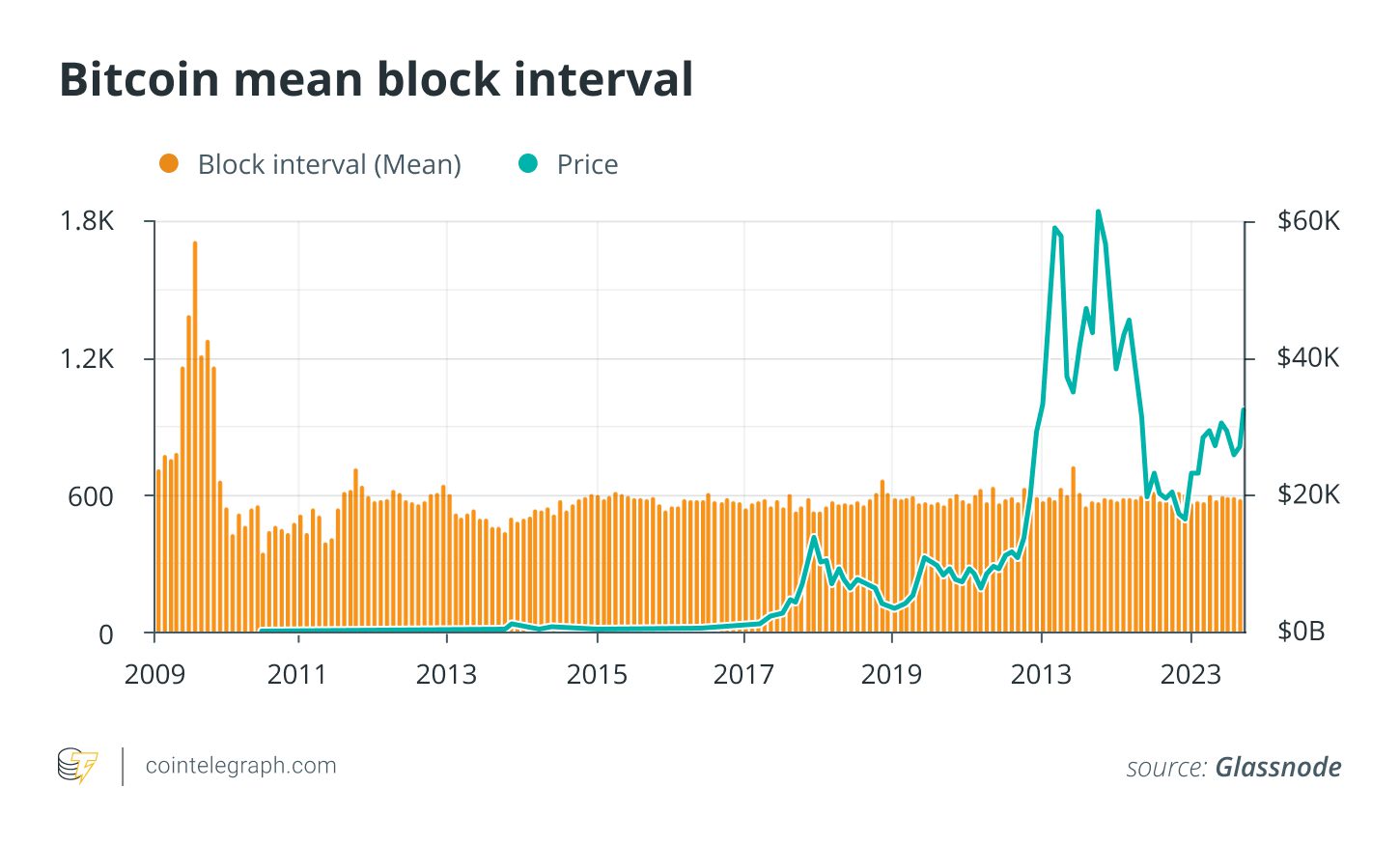A Bitcoin (BTC) block that took over an hour to mine made headlines earlier in November. This is despite Bitcoin’s core protocol being written to aim to mine a block every 10 minutes.
Block 815,690 is the latest outlier to generate press speculation. This block took one hour and nine minutes to mine on Nov. 7. Public interest in an hour-plus confirmation time is not a singular event. Roughly once or twice a year, a media outlet picks up on a long block validation event and decides to run with the story.
On Oct. 17, 2022, a prominent crypto news site reported on a block that took one hour and 25 minutes to mine, which spurred a flurry of similar reports. As the story spread widely on social media, some fans reveled in the relative speed of their favored centralized altcoin.
The report eventually caught the attention of Lighting Network founder Tadge Dryja, who was decidedly unimpressed.
As Dryja pointed out on X (formerly Twitter): “A time between blocks of 85 minutes happens every 34 days or so (assuming no difficulty changes, etc).”
Dryja’s point was clear: A single long block alone is no cause for alarm. Given the regularity of longer blocks, Dryja questioned whether the article would be a new monthly feature for the publication.
Probability is tricky
While almost everyone who knows about Bitcoin understands that the coin’s proof-of-work consensus mechanism is a puzzle of computational guesswork, the math that underpins this knowledge is infinitely harder to understand.
The probability of an hour-long block occurring is relatively low, and it is also higher than humans intuitively expect. Most of the time, longer blocks go unnoticed, at least by the press.
This might help to explain why longer blocks become a talking point whenever someone stumbles across them.
Recent: Bitcoin’s many deaths: Is crypto market past ‘point of no return?’
In February 2021, a crypto community member on X, Bitcoin Jack, noticed that one hour and 46 minutes passed between blocks 670,637 and 670,638. That’s just one block confirmed where 10 or 11 would typically be expected.
Jack tagged cypherpunk and Bitcoin advocate Jameson Lopp to ask how common such occurrences were. Lopp confirmed that 190 blocks had taken 106 minutes or more to mine in the previous 12 years. It’s worth remembering, however, that in its earliest years, Bitcoin blocks more regularly took longer to mine, which skews the figures slightly.
Click Here to Read the Full Original Article at Cointelegraph.com News…
























